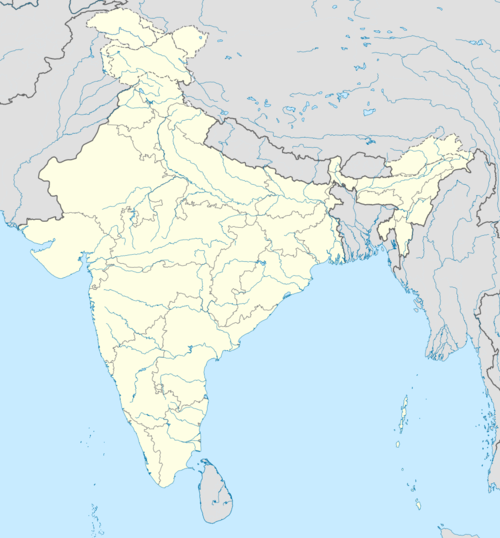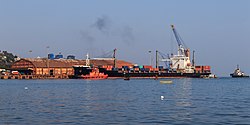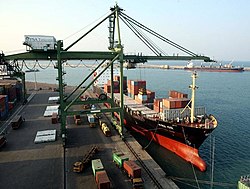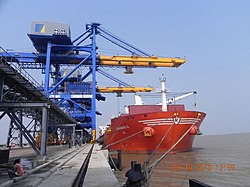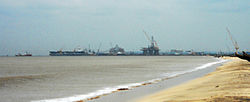
In India, ports are categorised into major ports and non-major ports (minor ports). As of 2024, the country has 14 major ports [1] and 217 non-major ports. Major ports are administered by the Ministry of Ports, Shipping and Waterways under the Government of India, whereas non-major ports fall under the jurisdiction of State Maritime Boards of respective state governments, including private ports operating under the public–private partnership (PPP) model. Among the 217 non-major ports, cargo is handled only at 68 ports, others are used by fishing vessels and ferries. [2]
Contents
- Shipping in India
- Capacity
- Ship building
- Ship breaking
- Ports in India
- Sagar Mala: port-led development
- Transshipment ports
- Major seaports
- Minor seaports
- Unranked seaports
- River ports
- Maritime boards
- See also
- References
- External links
India has a coastline of 11,098 kilometres, [3] forming one of the largest peninsulas in the world. According to the Ministry of Ports, Shipping and Waterways, around 95 percent of India's trading by volume and 70 percent by value is done through maritime transport. India's major ports handled highest ever cargo of 795 million tonne in FY23. [4] Mundra Port is the largest container port in India and its maximum cargo till date received is 338 MMTPA.
Due to the shallow depth of its east coast ports (8-12 meters), [5] India is unable to accommodate large ships, [6] causing 25% of its cargo to be diverted to deeper foreign ports [7] and resulting in an annual economic loss of Rs 1,500-4,500 crore. [8] In 2024, the upcoming International Container Transshipment Port, Galathea Bay was notified as India's 13th major port. Its first phase of development is expected to be commissioned in 2028. [1] Port Blair, which was notified as a major port in 2010, was later removed. The ports are spread across Andaman and Nicobar Islands, Andhra Pradesh, Goa, Gujarat, Karnataka, Kerala, Maharashtra, Odisha, Puducherry, Tamil Nadu, and West Bengal. [9] Government of India plans to build new greenfield ports and also built associated infrastructure such as railway lines through the 2015 established Sagar Mala project, [10] and National Maritime Development Program. [11]

